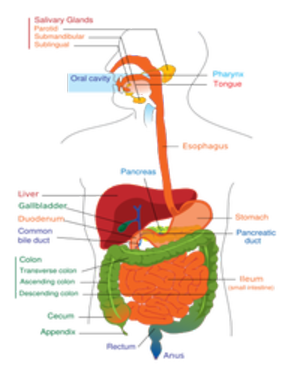Recognizing common digestive disorders may be difficult for the average person. Digestive disorders present some of the same symptoms. Discerning which one is plaguing you means knowing the specific combination of symptoms associated with each condition. Here’s a list of common digestive disorders and symptoms to help you pinpoint your illness.
Acid reflux / Gerd
Acid reflux is caused by an overabundance of acid in the stomach. The causes of this common digestive disorder vary from overuse of antacids to improper diet and lifestyle choices. Acid levels in the stomach increase, slowing the normal digestive process. Excess acid travels back up the esophagus. This leads to heartburn, a sour taste in the mouth, vomiting and damage to the esophagus. Acid reflux is a serious condition that may lead to cancer from stomach acid damage.
Irritable Bowel Syndrome / IBS
Persons with irritable bowel syndrome have intestines that do not function properly. Their intestines either work too quickly or not quickly enough, making bowel movements uncomfortable, irregular and sometimes extremely urgent. IBS sufferers have frequent episodes of gas and bloating. This common digestive disorder can cause diarrhea, constipation or both. Bowel movements are often accompanied by severe cramping and abdominal pain.
Ulcers
This common digestive disorder was once thought to be caused by diet. It’s now believed that the majority of ulcers are cause by a bacteria known as H pylori. Ulcers are sores in the digestive tract, primarily in the stomach. People can also have ulcers in the colon and intestines. Ulcers cause burning pain in the region of infection. Some ulcers can also cause bleeding, which will be noticed in the stool. Ulcers which have broken through the stomach can hamper digestion. This will cause nausea, vomiting and weight loss.
Diverticulitis
This common digestive disorder is caused by small pouches forming in the intestinal tract. The pouches can become irritated and inflamed, causing a great deal of pain. Fever, nausea, constipation, diarrhea and severe abdominal pain are the most common symptoms of diverticulitis. Blood in the stool is a less common symptom, caused by the pouches bursting. It is thought that eating a high fiber diet with plenty of fruits and vegetables can prevent the infection associated with diverticulitis.
Gallstones
Gallstones are most common in women over the age of 60 but can form in people of any sex and age. This common digestive disorder is caused by stored fluids in the gall bladder solidifying and forming gall stones. A high cholesterol diet is the usual cause. Sometimes a gallstone will loosen and block the passageway to the intestine. This leads to very severe pain in the upper right stomach or the center of the back. The gall bladder can also become inflamed. This will cause jaundice or yellowing of the skin. Seek medical attention right away if you have symptoms of gallstones. This condition can have very serious complications.
Please Note: The author is not a licensed medical professional. This article is not intended to replace professional medical advice.
Sources:
Family Doctor
Merck Manuals
Web MD
More from Jaipi:
Exploring Water as a Natural Cure – Frequently Misdiagnosed Symptoms of Dehydration
How Onions Help Asthma Symptoms
Best Natural Bath Soaks for Flu Symptom Relief
